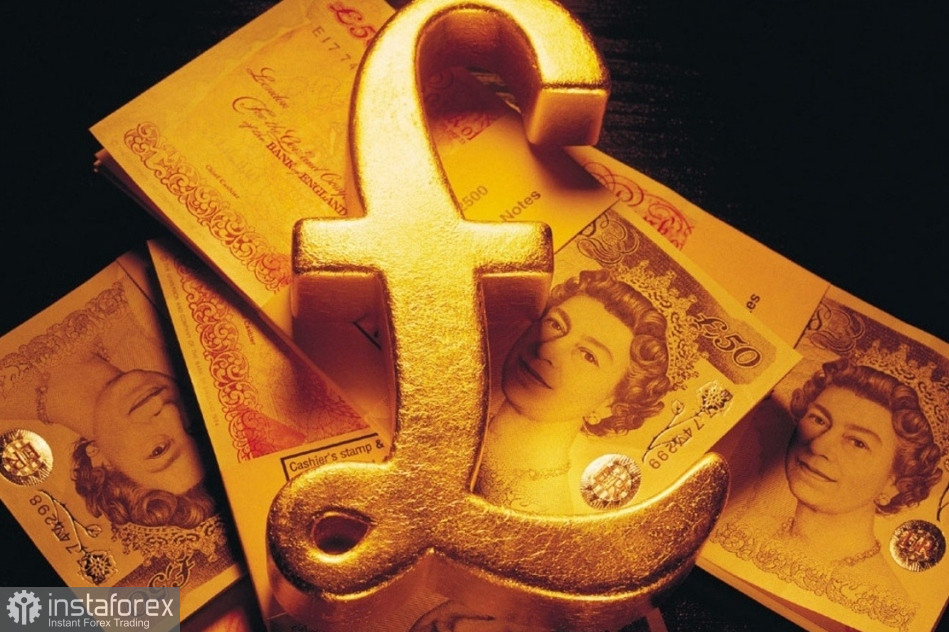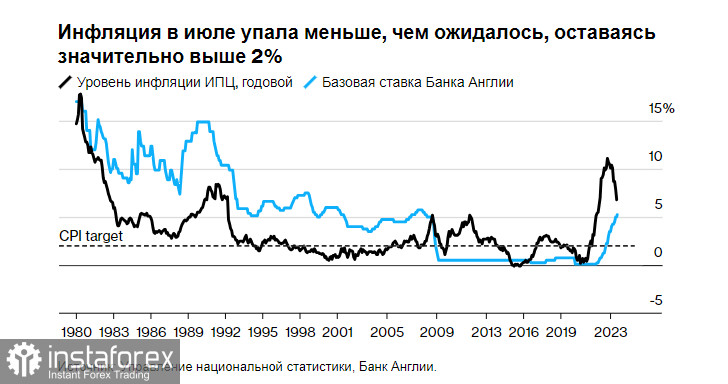The British pound rose from its daily lows after news broke that last month's inflation in the UK remained relatively high. This was contrary to the expectations of economists and the Bank of England. The central bank had planned to end its aggressive policy by the end of the year
According to a report from the Office for National Statistics, the UK's Consumer Price Index (CPI) increased by 6.8% in July. This exceeded the anticipated rise of 6.7%. Despite the slower decrease, this marks the fifth consecutive slowdown in price pressure.

However, inflation is still more than three times higher than the Bank of England's target of 2%. While a decrease in energy and food prices led to an overall drop from 7.9% in June, service costs increased by 0.2% to 7.4%. This matched the highs reached in May and in 1992. Airfare and hotel prices also rose quickly because of the vacation season. Additionally, rental costs increased by 1.7%.
It is obvious that the regulator will continue facing challenges in curbing inflation after the record wage growth reported yesterday and a strong increase in retail sales. Following today's data, there are renewed rumors that the Bank of England will raise rates by a quarter point or more next month.
Clearly, the regulator has not reached the point where it can say it is winning the inflation battle, as the pressure remains too high. Currently, the market expects the Bank of England to raise rates by another 75 basis points to 6% by March next year.
Notably, Prime Minister Rishi Sunak's government has prioritized fighting inflation in light of the expected elections next year. The Treasury has a lot of work to do to genuinely affect price growth rates. Given that there are only four months left this year, it is not so obvious that year-end inflation will decrease in line with economists' forecasts.
Core inflation, which excludes prices of food and energy, remained unchanged at 6.9% in July, while economists had anticipated a decrease.

The pound sterling advanced amid inflation figures. Regarding today's technical picture for GBP/USD, the asset continues trading within the channel. The pound sterling will rise only after bulls gain control over the 1.2725 level. Regaining this range will boost hopes for recovery to 1.2750 and 1.2770, after which we can talk about a surge to around 1.2815. If the pair falls, bears will attempt to take control over 1.2690. If they succeed, a breakout of this range will hurt bulls' positions and push GBP/USD to a low of 1.2660, with the potential to drop further to 1.2620.
Meanwhile, pressure on the euro remains the same. To regain control, buyers should keep the price above 1.0920. This would pave the way to 1.1950 and allow the pair to test 1.0950. From there, the price may climb to 1.1020. However, it would be quite difficult without support from major traders. If the pair drops, I expect significant actions from major buyers only around 1.0880. If they fail to be active, it would be wise to wait for a low of 1.0840 or consider long positions from 1.0810.
 English
English 
 Русский
Русский Bahasa Indonesia
Bahasa Indonesia Bahasa Malay
Bahasa Malay ไทย
ไทย Español
Español Deutsch
Deutsch Български
Български Français
Français Tiếng Việt
Tiếng Việt 中文
中文 বাংলা
বাংলা हिन्दी
हिन्दी Čeština
Čeština Українська
Українська Română
Română

